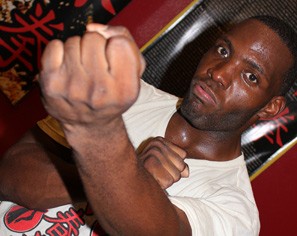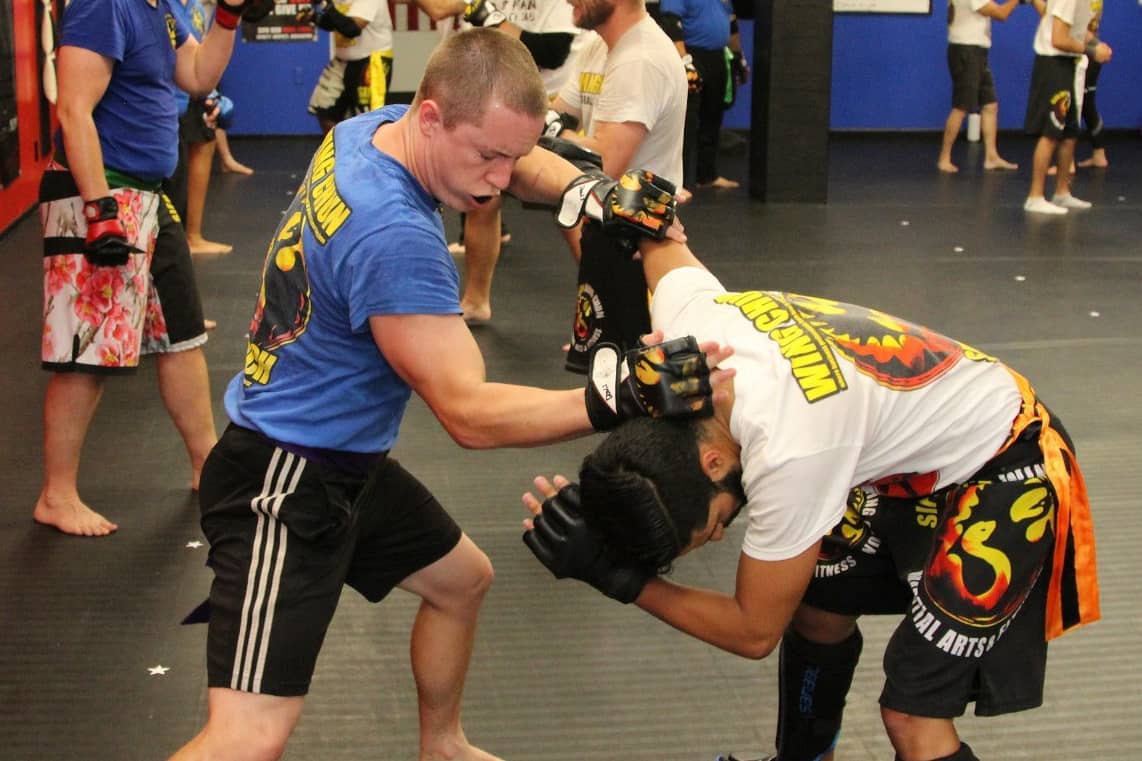There are many steps to Building a Fun Kung Fu Kids Class. You can vary teaching styles based on age, style of martial art, and size of the class. Regardless of these factors there are a few things you can do to make sure that you are running and fun and engaging kids program. These are some of the things we do at the Sifu Och Wing Chun and Just Dance Afterschool and Martial arts Programs.

Building a Fun Kung Fu Kids Class: Part 1 Discipline
The very first thing that you must have when running any kids program is a focus on discipline. When the class is smaller, under 15-20 students, it can be easy to slack off give them more leeway. However, if good discipline is not integrated early in the program it will be difficult to maintain that when the class gets closer to 25+. What you must feel is the class energy. If the kids are engaged, following instructions, working hard, there will obviously be a very good energy in the class.

On the other hand, if there are children that are whispering to each other, spending too much time fixing a shoe or belt, etc. there will be a hiccups in flow of class. When you feel the flow of energy weakening you must change the class dynamic. But more on that later.

One of the first tricks we to maintain class discipline and structure is using the word discipline itself. When one of our instructors calls “discipline” the entire class responds with “yes sir” and stands at perfect attention. To compliment that you must enforce this and any other rules without hesitation or exception.
When we call discipline if any child speaks, doesn’t stand up, or is distracting another student we address it immediately. We enforce this with burpees. To keep the group together we will tell the students to start the burpee by saying “down”. When we say “up” we have them stand back up in discipline and say “yes sir”. This is repeated as many times as necessary until the group is performing this quickly as a unit.
Building a Powerful Kung Fu Kids Class Part 2: Class Dynamic
The next aspect we will discuss is the class dynamic. As mentioned earlier you need to feel the energy in class. If you have classes that include children as young as 5 years old you will find that they my struggle more so with paying attention. If you also have a larger class this problem is compounded. To help maintain a fun but focused atmosphere you have to be able to make adjustment quickly. By interchanging combos with a mini work out you can quickly re-engage those who may be distracted.
The next aspect we will discuss is the class dynamic. As mentioned earlier you need to feel the energy in class. If you have classes that include children as young as 5 years old you will find that they my struggle more so with paying attention. If you also have a larger class this problem is compounded. To help maintain a fun but focused atmosphere you have to be able to make adjustment quickly. By interchanging combos with a mini work out you can quickly re-engage those who may be distracted.

Teaching a basic combo like Jab, uppercut, round house, can be either very fun, or very boring. If you mix it into a fun work out to get the student’s moving you lift the overall energy. For example: if we have the students run in place, switch to high knees, then immediately take a fighting stance. Quickly follow up with the combo two or three times. Then we have them isolate one or two of those techniques and repeat them. The go back to the high knees, or jumping jacks etc. By cycling through different mini workouts, techniques, and other options you can keep the class very exciting.
Building a Powerful Kung Fu Kids Class Part 2: Fun!
The last thing is of course have fun with them. If you as the instructor have an upbeat excited attitude then the students will more than likely emulate that. By embracing your inner child you can usually find new and engaging ways to energize the class. Have fun, maintain discipline, and you will have quite a enjoyable kids class.

Why Choose Sifu Och Wing Chun
Practicing provides numerous benefits, including:
- Physical Fitness: Enhance strength, flexibility, and endurance.
- Mental Clarity: Develop focus and discipline through structured training.
- Self-Defense Skills: Learn effective techniques for personal safety.
- Cultural Enrichment: Gain insight into a centuries-old tradition.

Want to Get Started?
Join Sifu Och Wing Chun today and embark on your journey through the world. Fill out our contact form to discover why we are your best choice for Wing Chun Kung Fu and martial arts training in Lakeland, Florida!
Related articles on the Sifu Och Wing Chun website:
Cuts, Collisions, & Crying: Tips for Your Kids Program
https://sifuochwingchun.com/cuts-collisions-crying-tips-for-your-kids-program/
Exercising Kids and Training Kids Goes Hand in Hand
https://sifuochwingchun.com/exercising-kids-training/

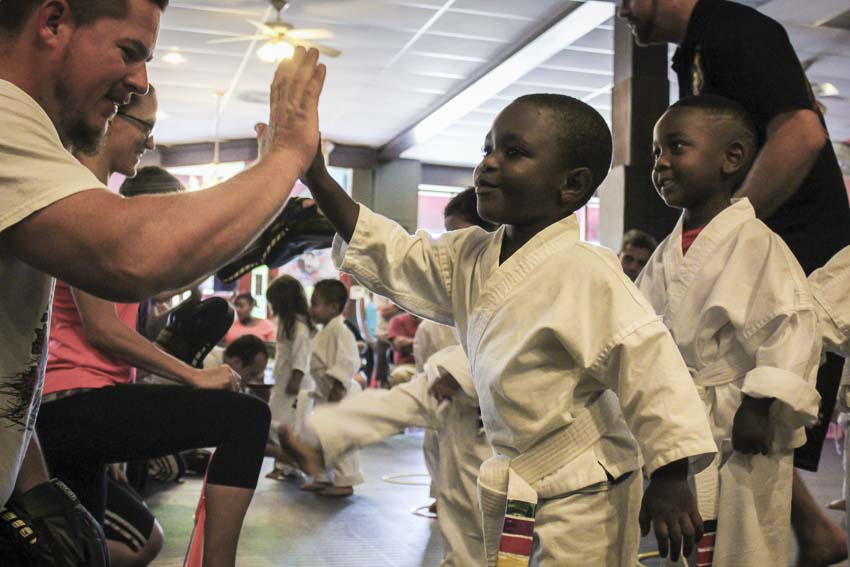
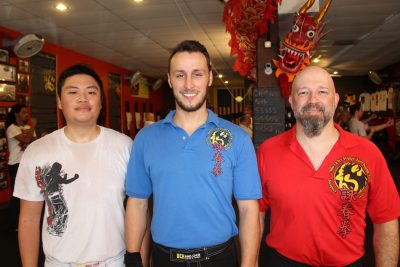
 The beginner class is for those students that are within their first year of training. We typically have one main instructor on the floor who has trained for at least 3 years. He or she helps the new student’s build their fundamentals. The focus of this section of class is to build their immediate ability to stop basic, common attacks. In our article
The beginner class is for those students that are within their first year of training. We typically have one main instructor on the floor who has trained for at least 3 years. He or she helps the new student’s build their fundamentals. The focus of this section of class is to build their immediate ability to stop basic, common attacks. In our article 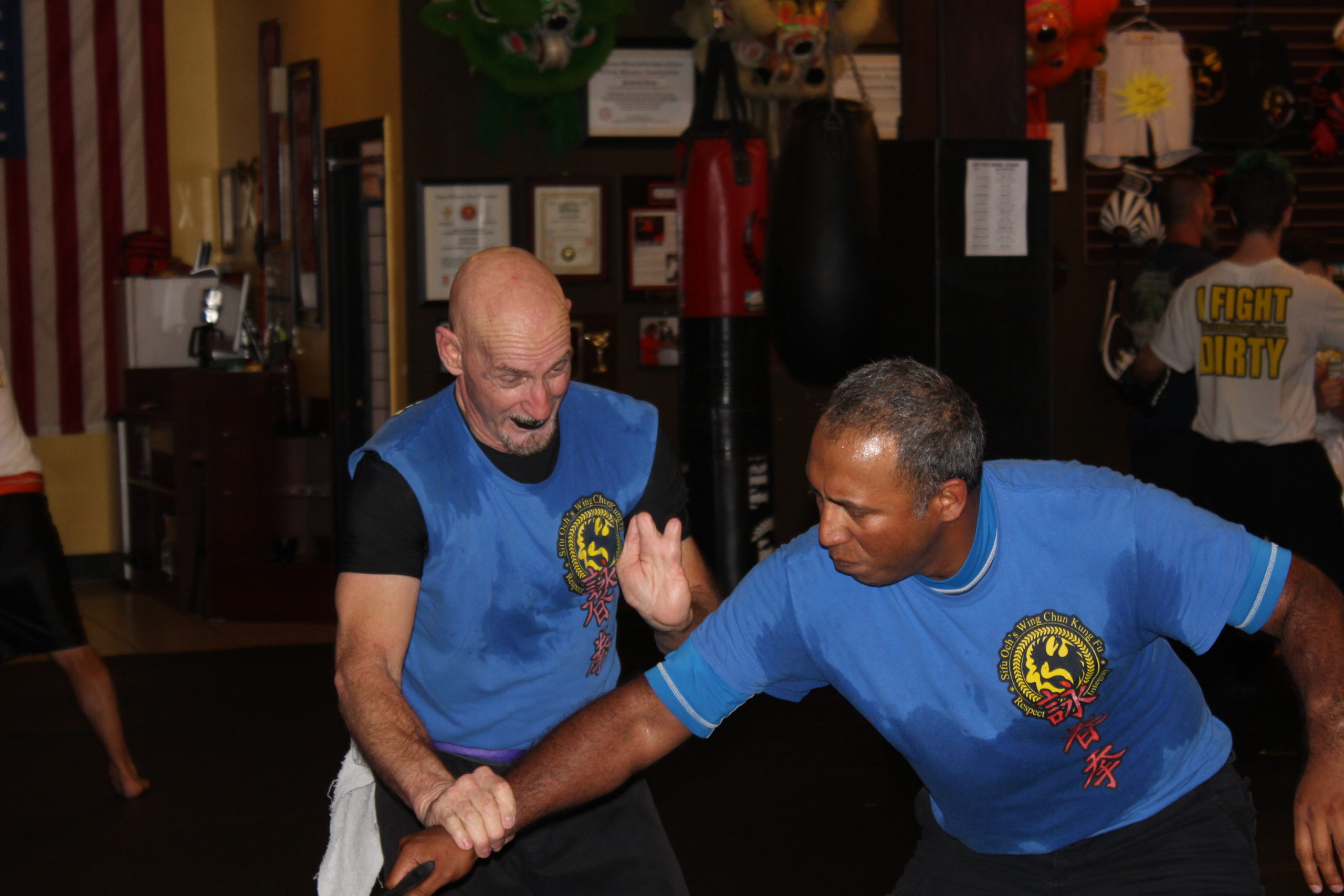


















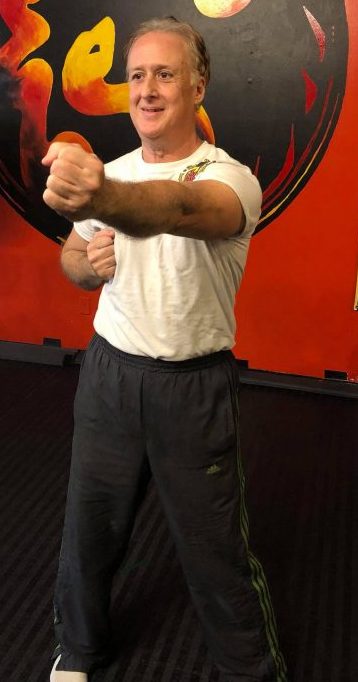
 If anybody is in the 40s or 50s age and would like to learn some self-defense they should not hesitate. They should come down to Sifu Och and start their own journey! Your age shouldn’t hold you back. I’m 58 but that is just a number. I don’t allow that to be an excuse to not learn something new. Life can be very hard. And many times you want to just give up. But the wonderful things in life take some time to learn.
If anybody is in the 40s or 50s age and would like to learn some self-defense they should not hesitate. They should come down to Sifu Och and start their own journey! Your age shouldn’t hold you back. I’m 58 but that is just a number. I don’t allow that to be an excuse to not learn something new. Life can be very hard. And many times you want to just give up. But the wonderful things in life take some time to learn. Sal shows that now matter your age you can accomplish anything with hard. Day after day Sal comes into class and puts in a hard days training. Starting from private lessons he has been able to work himself into the group classes. The most impressive thing about Sal is his determination. He doesn’t care about belts, or awards, or flashy techniques. He simply wants to know that he can take care of himself. Each day he comes in and builds himself from the last class.
Sal shows that now matter your age you can accomplish anything with hard. Day after day Sal comes into class and puts in a hard days training. Starting from private lessons he has been able to work himself into the group classes. The most impressive thing about Sal is his determination. He doesn’t care about belts, or awards, or flashy techniques. He simply wants to know that he can take care of himself. Each day he comes in and builds himself from the last class.







 Here on Tony Plasse: Becoming an Orange I explain my story but first, some history. Wing Chun a southern Chinese martial art mentioned during the period of the Red Boat Opera in the Late 1800s. Developed by southern Shaolin monks to help combat the Manchurians. It is influenced by other Fujian martial arts that preferred short steps and close fighting, with arms placed close to the chest and elbows close to the flanks offering protection. A simple boxing form quickly mastered by dedicated practitioners.
Here on Tony Plasse: Becoming an Orange I explain my story but first, some history. Wing Chun a southern Chinese martial art mentioned during the period of the Red Boat Opera in the Late 1800s. Developed by southern Shaolin monks to help combat the Manchurians. It is influenced by other Fujian martial arts that preferred short steps and close fighting, with arms placed close to the chest and elbows close to the flanks offering protection. A simple boxing form quickly mastered by dedicated practitioners.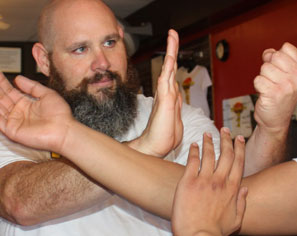 have spent the last year training with Sihing Garret and I have noticed improvements in myself. Garret emphasizes physical training at the beginning of each class. I have improved muscle tone and stamina. Wing Chun techniques taught to me have improved my reflexes much to my surprise. Not just in wrist against wrist but in everyday applications. I react to things such as doors flying at my face. I caught one once with a Jum Sau action. The lady next to me said “Wow! That was like a ninja!”. I also catch the items knocked off shelves with a lot more ease.
have spent the last year training with Sihing Garret and I have noticed improvements in myself. Garret emphasizes physical training at the beginning of each class. I have improved muscle tone and stamina. Wing Chun techniques taught to me have improved my reflexes much to my surprise. Not just in wrist against wrist but in everyday applications. I react to things such as doors flying at my face. I caught one once with a Jum Sau action. The lady next to me said “Wow! That was like a ninja!”. I also catch the items knocked off shelves with a lot more ease. The wrist against wrist drill has helped my sensitivity improve into reaction. It has given me more confidence in handling myself. I always knew my normal movements gave me power. But now I am learning to channel that power more efficiently through stance and technique. I am more confident that I’m more prepared for situations when I’m out on the town or at work. I believe there are many applications I could have used previously in my life as a football player. Namely the footwork and center line punch drill. Both would have greatly helped me as an offensive lineman and coach. It also adds to my overall scariness.
The wrist against wrist drill has helped my sensitivity improve into reaction. It has given me more confidence in handling myself. I always knew my normal movements gave me power. But now I am learning to channel that power more efficiently through stance and technique. I am more confident that I’m more prepared for situations when I’m out on the town or at work. I believe there are many applications I could have used previously in my life as a football player. Namely the footwork and center line punch drill. Both would have greatly helped me as an offensive lineman and coach. It also adds to my overall scariness.































